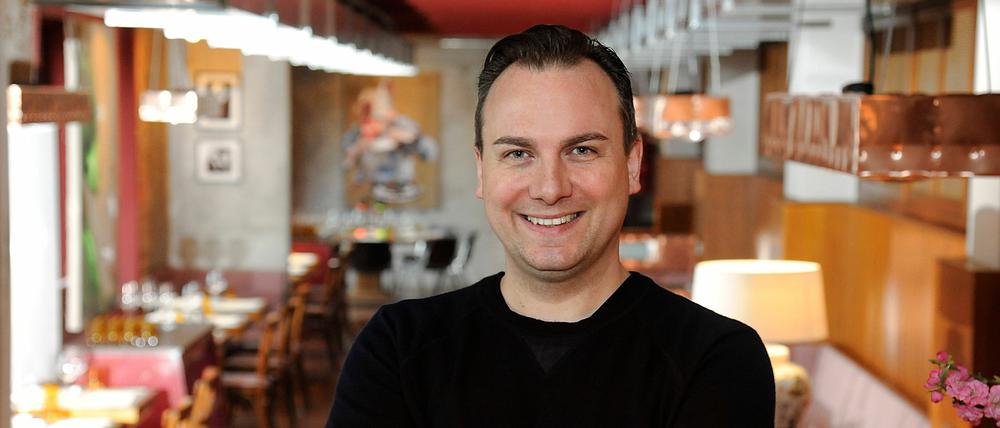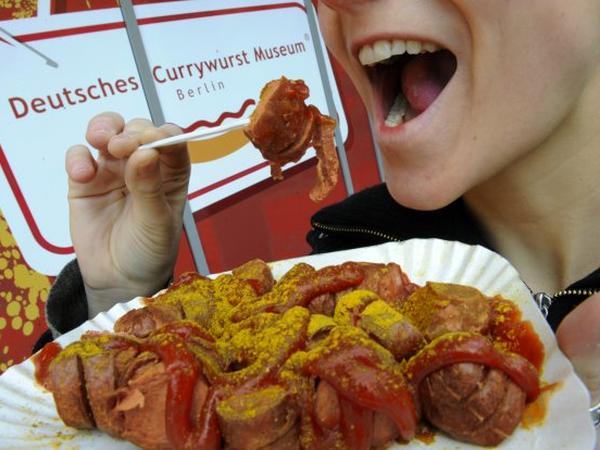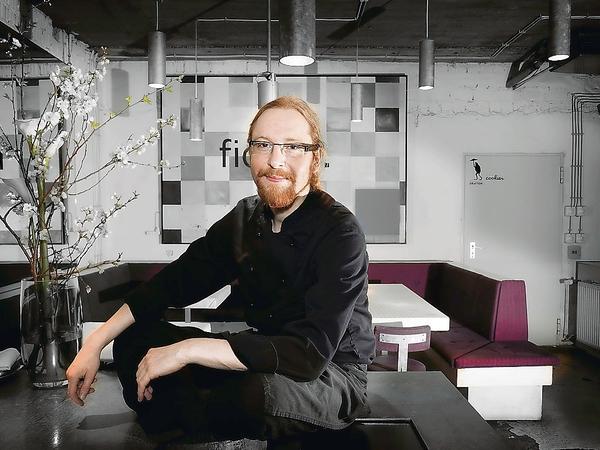
© Kai-Uwe Heinrich
Food & Drink: The best possible taste
Berlin's culinary scene is as diverse and unique as the city itself. There's everything from street food to Michelin-starred cuisine and even fancy dining at non-fancy prices
To set the record straight, Berlin was never particularly well known for its culinary scene. During the rule of the Kaisers, Berliners did in fact consume as many oysters as the Parisians and, yes, decadent eating was in full swing in the Roaring Twenties. Berliners also rediscovered food when the frugal post-war years were finally behind them: In 1966, four Berlin restaurants made it into the Michelin league. But that's pretty much it. In 1980, even Hanover out-cooked Berlin. And after Berlin's reunification, big money disappeared and didn't return until the tourists did, decades later.
Berlin has now turned over a new leaf, finally home to its own budding restaurant scene. In terms of Michelin stars, Berlin has six two-star and 13 one-star establishments - a German record. The city may still be missing a world-class three-star institution but this would require a level of fanciness slightly foreign to the edgy capital. Instead, Berlin prides itself on being home to Tim Raue, a world-class chef whose simple restaurant in Kreuzberg is frequently ranked as one of the world's best.
So what makes Berlin's culinary scene so special?
Presumably its accessibility and vast stylistic range. Mr. Raue is a leading force in Berlin's neo-Asian kitchen scene, while the Lorenz Adlon is known for its variety of modern classics. There's countless eccentric hipster restaurants in Neukölln and Kreuzberg, a variety of elegant steakhouses, and also some restaurants specializing in regional dishes, such as Nobelhart&Schmutzig and Einsunternull.
Berlin also has a few hyped vegan institutions, and the Korean food scene is booming. Additionally, the street food trend is leaving its fingerprints on restaurant menus across town. People have actually started waiting in line for tables at the city's newest, hottest restaurants - a formerly unimaginable concept. One thing is for sure: the days when restaurants always had available tables are long gone.
Of course Berlin's old rules are still in place when it comes to local resto-pubs and, generally speaking, a warm meal is usually less than a few blocks away. The city is bursting at the seams with pizzerias, Asian restaurants and kebab joints. It is, however, getting more and more difficult to find good German restaurants serving national or regional specialties. Over the years, only a few old inns have survived, such as Zur Letzten Instanz. But, to be honest, it almost feels like a culinary museum in a sea of modernity.
In the 1990s, Asian restaurants were the recipe to restaurant success in Berlin. The city's predominantly Vietnamese and now Korean hotspots are still a big hit today, especially among tourists. And because their experience-hungry clientele doesn't have the time or the money for elaborate menus or attentive service, most are simply furnished and turning tables quickly.
Berlin's Absacker-Kultur, or nightcap culture, is growing alongside an increasing amount of classy wine bars. Unlike typical cocktail bars, these drinking holes pride themselves on their inclusive atmosphere and greater selection of food.
Berlin Currywurst
The Currywurst remains Berlin's most famous delicacy. In recent years, Berlin's signature sausage even made it onto the menu at the Adlon's in-house, upscale restaurant Quarré. And even though the kebab is far more popular and easy to come by in Berlin's trendiest districts, it has yet to join the luxury ranks. Most fast-food stands now actually sell both.
Ever since Berlin's street food movement was kicked off at the Markthalle IX in Kreuzberg, the term „street food“ is no longer exclusive to food consumed on the street. Every Thursday evening, the Kreuzberger market hall comes to life with numerous stalls modeled on an Asian street food market. The market offers a wide selection of international, steeply priced food, ranging from pulled pork burgers to German cheese noodles and Thai dumplings.

© dpa
The street food movement has not only gained traction in other Berlin districts, but has also reached the trendsetting Scandinavian capitals. The charm of the skilled amateur has triggered the development of short-term pop-up restaurants and supper clubs, the latter receiving a disproportionate media hype. But as these little, trendy, spontaneous institutions face more and more legal hurdles, their glory days are bound to end soon. It's also not particularly easy to find good cooks on a temporary basis.
In the late 1990s, Berlin's gourmet scene finally rose from the ashes. Experiencing economic decline, the city's luxury hotels created new restaurants as a marketing tool to attract new visitors. Various hotels commissioned the establishments of affiliated high-end restaurants, among them Hugo, Quadriga, Harlequin and First Floor. Berlin's established hometown cooks Siegfried Rockendorf and Franz Raneburger bowed out and yielded the floor to Berlin's new haute cuisine. Things really started picking up in the early 2000s, certainly not uncorrelated with the huge wave of visitors who flocked to Germany for the 2006 World Cup.
Led by head chef Christian Lohse, the Regent Hotel's affiliated restaurant Fischers Fritz received a second Michelin star in 2007 - the first restaurant to do so since 1993. Facil, Lorenz Adlon, Reinstoff, Horvath and Tim Raue soon followed. The latter succeeded to use his good name for other projects, such as the more mainstream La Soupe Populaire, first founded in 2013. The restaurant's exciting menu was set up to complement the newly converted exhibition space in Prenzlauer Berg's old Bötzow brewery.
As soon as Mr. Raue's clients got a taste of his Königsberger Klopse, a Prussian meatball specialty, Berlin experienced a Klopse renaissance that snowballed across town. But the trend was slightly exaggerated, given how simple even the most elaborate Klopse recipe must be. The Soupe is currently closed for renovation and won't reopen its doors until the spring of 2017. Until then, Raue-fans can check out Brasserie Colette, where Mr. Raue is currently reinventing French bistro-cuisine.
Berlin's hunger for good food continues to rise, not only due to the city's influx of tourists. Nowadays, young chefs no longer need to leave Berlin if they're looking to start their own business or find a new project. Berlin has become a stage, where passionate cooks are eager to perform. They are no longer only looking to work at expensive luxury restaurants with white tablecloths, fancy silver and formal waiters. Instead, kitchens that once served the same onion soup day after day have risen to the occasion. Aesthetically low-key, restaurants such as Martha, Eins44 or Schwein are now redefining Berlin's modern restaurant culture. And despite their industrial-chic exterior, a single dining experience at such a restaurant can cost up to Euro200 per person.

© Kai-Uwe Heinrich
Cookies Cream - City's best vegetarian restaurant
The demand for vegetarian/vegan options in Berlin is far smaller than the hype suggests. As a result, green alternatives are more an option than a priority at Martha and Co. And still, quite a few dishes have become particularly vegetable-heavy, while meat and fish keep disappearing from menus across town. And it's true: vegan restaurants are far easier to come by in Berlin than in the rest of Germany. The reason for their low review ratings, however, remains unknown. Some restaurant critics say that most of Berlin's vegan and vegetarian restaurants just aren't that good. Veggie-loving insiders, on the other hand, argue that guide books are biased against them. It is safe to say that Cookies Cream is without doubt the city's best vegetarian restaurant. Its location is about as Berlin as it gets: The restaurant has its own secret doorbell hidden at the end of a staircase past the dumpsters behind the Westin Hotel's nondescript delivery entrance.
Meanwhile, meat-eating is taking on an increasingly important role in Berlin with the rise of the (slightly modified) steakhouse. Before indulging in an expensive steak, restaurants serve a small, well-prepared starter with a matching wine. This trend first started at Grill Royal, and is now complemented by the Petit Royal in West Berlin. Along with the equally fancy but slightly older Borchardt, Grill Royale has become widely known as the place where Berlin's movers and shakers go to dine. Some Berlin restaurants, such as the Brooklyn, the three Hasir Grill Clubs or the Goldhorn Beefclub, get through an entire cattle farm in one night.
Even Berlin's restaurant scene follows the city's main mantra: „to each his own.“ But there is still room for improvement. For example, a move towards using better products than the ones that are currently in use is surely in order, especially with regard to Japanese cuisine. Turning the regional kitchen hype into reality will also only work out if the region actually cooperates.
Other subjects:
- 335.000 students attend schools in Berlin: More about schools and education
- Berlin registered 50.000 new residents. Read about places to live.
- Berlin is a huge city with an infrastructure to match: Getting from A to B
- showPaywall:
- false
- isSubscriber:
- false
- isPaid:
- showPaywallPiano:
- false